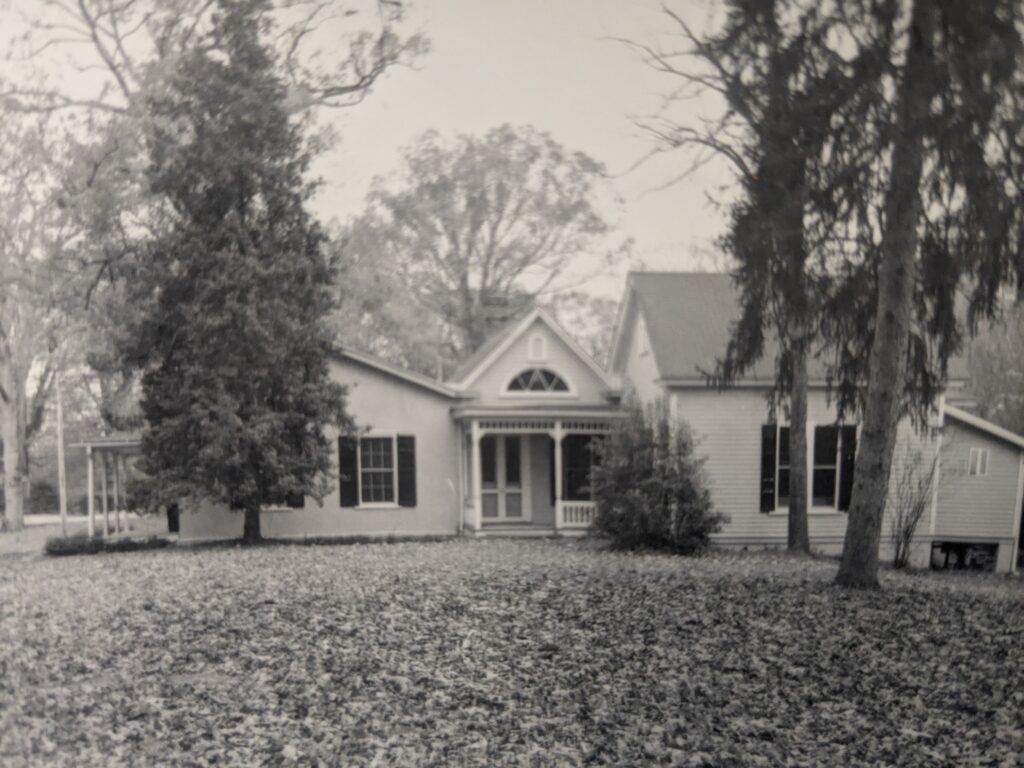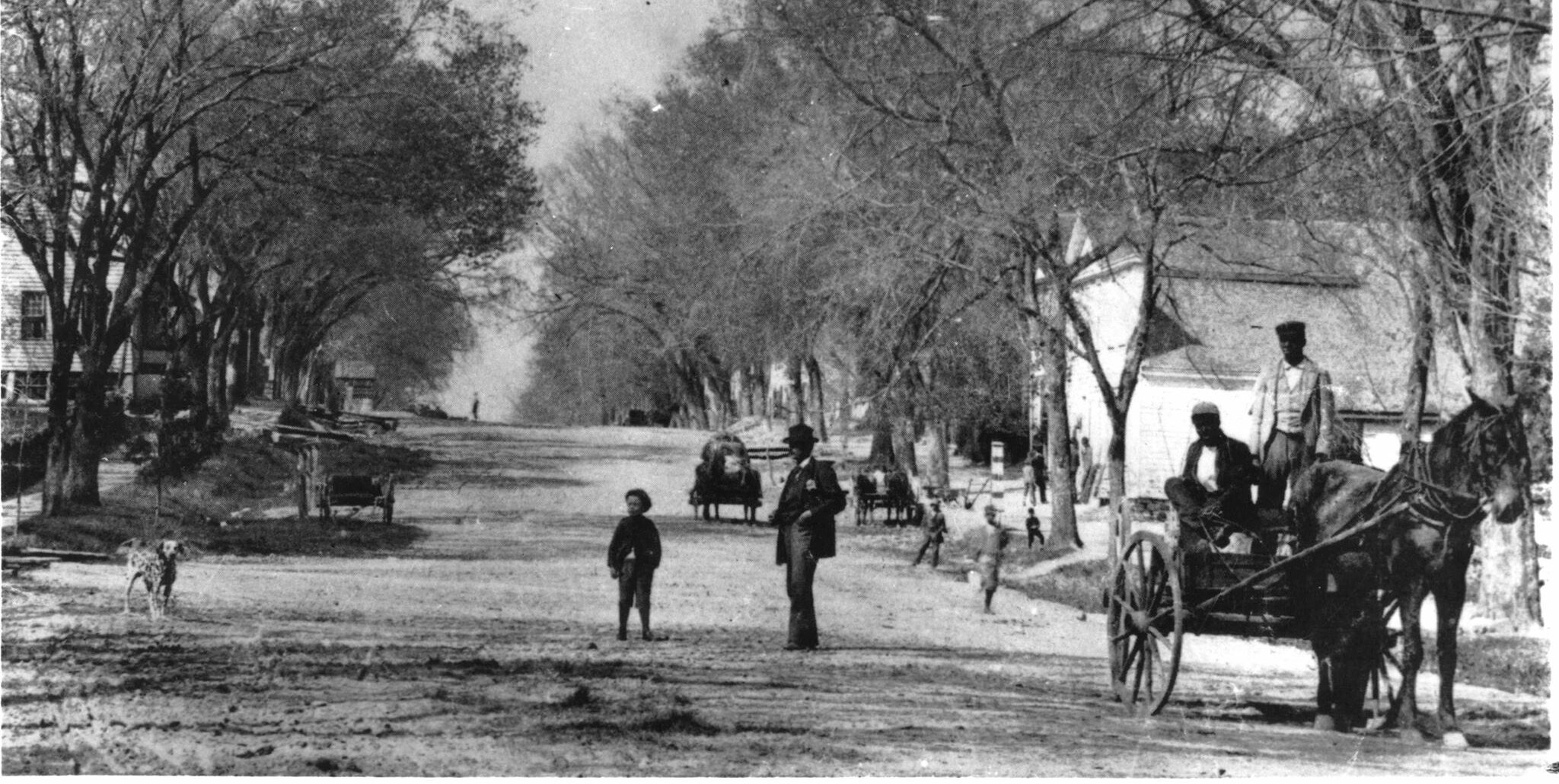Horace Williams House
Tucked away in the heart of Chapel Hill, the Horace Williams House stands as more than just architecture. Within its walls, it recorded academic courage, controversy, and community. While it is most remembered for its namesake, Horace Williams, its original owner had quite an interesting story of his own.
The Horace Williams House was originally the Hedrick House, built in 1854 by Benjamin Sherwood Hedrick on land that he purchased from the University for $300. Hedrick was a professor of analytical and agricultural chemistry at the University of North Carolina at Chapel Hill. Notably, he added an eight-sided room with a distinctive fireplace in the center.1 2 The house was completed in 1855, and Hedrick moved in with his wife and children.
Benjamin Hedrick taught at UNC during an era of proslavery conformity in the 1850s. In 1856, a student asked him who he was planning to vote for in that year’s election. Hedrick replied that he would support John C. Fremont, the candidate for the Republican Party. Fremont was in fact part of the Free Soil Party, which was working to stop the expansion of slavery and thus was particularly unpopular in Chapel Hill, a southern town.3
This news was spread, and many demanded that Hedrick be dismissed from the university. Hedrick published a defense of his position, advocating against the westward expansion of slavery and citing economic harm to North Carolina.4
Hedrick was fired in November 1856 for engaging in political conflicts and expressing his anti-slavery views, the only known dismissal of UNC faculty for political reasons in history. He was forced to leave the Horace Williams House and North Carolina.
For more on Benjamin Hedrick: https://exhibits.lib.unc.edu/exhibits/show/academic_freedom/19th-century/hedrick-indiscretion
In 1857, Hedrick sold the house to another professor, Hildreth Hosea Smith, for $1500.5 The University eventually closed during the Reconstruction era after the Civil War. In 1879, Latin professor George T. Winston bought the property for $1000, and added the front parlor and front porch and enclosed the former breezeway of the house. He also added unique features of the house, such as different windows in a variety of shapes and sizes – one features a W for Winston. Winston became president of the University in 1891.




Horace Williams, the namesake of the house today, graduated from the University in 1883 and returned to teach philosophy and psychology in 1891. He purchased the house in 1897 for $1450. The front of the house became his study, where students would often gather to debate and discuss philosophy.
Robert Watson Winston, the brother of George T. Winston, wrote a book entitled Horace Williams: Gadfly of Chapel Hill – in it, he noted Williams as “a veritable gadfly, waging a never-ending warfare against ignorance, superstition, intolerance, and orthodoxy”.6 Robert Watson Winston was one of Williams’ students. He later became a North Carolina Superior Court judge and a writer of many notable biographies. In Gadfly, he wrote about Williams as an owner of significant amounts of land in Chapel Hill, of which he often took Black tenants and treated them poorly. According to gossip in the community, Williams was constantly “buying up Negro houses and charging unreasonable rents,” subjecting him to critique that he was “in the classroom a saint and on the streets a devil!”7
Despite this controversial history, Williams is most commonly remembered today as a well-liked professor who encouraged his students to ask questions and investigate problems deeply. Williams had many notable students, including Thomas Wolfe, Phillips Russell, and Paul Green. Wolfe said Williams was “a dominant figure in the lives of the entire state.”8
He left much of his real estate to the Department of Philosophy and the University, some of which became the Horace Williams Airport, which is no longer in use today. Parts of Williams’s land comprise what was marked to be used for the Carolina North project.9 10
For more on Horace Williams: https://museum.unc.edu/exhibits/show/faculty/henry-horace-williams–1858-19
As for the house, Williams was its last private owner.11 Upon his death in 1940, the house was rented to professors and their families until its deteriorating condition led to its acquisition by Preservation Chapel Hill, an organization founded by Georgia Kyser, Robert Stripe, and Ida Friday, wife of UNC System President William Friday and a long time advocate of women’s rights, social justice, public health, and historic preservation in North Carolina.12 Ida Friday . The Horace Williams House is now the only historic house open to the public in Chapel Hill, with much of its original architecture still in place. Today, it provides Preservation Chapel Hill office and event space, art exhibitions, and other programs.




Many significant events have taken place at the Horace Williams House since. For example, Frances Hargraves, an African American activist in Chapel Hill and Carrboro, was honored at the Horace Williams House for her contributions to the community in 2002. She was a special education teacher who was the first black teacher to work with white students after integration in Chapel Hill and Carrboro in 1966. She was also involved in the Preservation Society and other community organizations.13
Hear directly from Hargraves about the impact and legacy of the desegregation of Chapel Hill Carrboro schools:

Through honoring individuals like Frances Hargraves and preserving local history, the Horace Williams House continues to engage the community and record its rich historical legacy.
Notes
1 “The Horace Williams House”, 1989, Videocassette C971.68 C46h. North Carolina Collection, University Archives, Louis Round Wilson Library Special Collections Library, University of North Carolina at Chapel Hill.
2 “Residents of the Horace Williams House,” The Graduate School | UNC, accessed March 3, 2025, https://gradschool.unc.edu/funding/gradschool/weiss/interesting_place/history/hwresidents.html
3 “Benjamin S. Hedrick (1827-1886),” The Carolina Story: A Virtual Museum of University History, accessed February 27, 2025, https://museum.unc.edu/exhibits/show/civilwar/benjamin-s–hedrick–1827-1886
4 “The Hedrick “Indiscretion””, UNC University Libraries, accessed March 3, 2025, https://exhibits.lib.unc.edu/exhibits/show/academic_freedom/19th-century/hedrick-indiscretion
5 “The Horace Williams House”, 1989, Videocassette C971.68 C46h. North Carolina Collection, University Archives, Louis Round Wilson Library Special Collections Library, University of North Carolina at Chapel Hill.
6 Winston, Robert Watson. Horace Williams: Gadfly of Chapel Hill, 1942.
7 Winston, Horace Williams: Gadfly of Chapel Hill.
8 “Henry Horace Williams (1858-1940),” The Carolina Story: A Virtual Museum of University History, accessed February 20, 2025, https://museum.unc.edu/exhibits/show/faculty/henry-horace-williams–1858-19
9 “Henry Horace Williams (1858-1940),” The Carolina Story: A Virtual Museum of University History, accessed February 20, 2025, https://museum.unc.edu/exhibits/show/faculty/henry-horace-williams–1858-19
10 “Residents of the Horace Williams House,” The Graduate School | UNC, accessed February 22, 2025, https://gradschool.unc.edu/funding/gradschool/weiss/interesting_place/history/hwresidents.html
11 “The Horace Williams House,” Preservation Chapel Hill, accessed March 20, 2025, https://www.preservationchapelhill.org/horace-williams-house
12 “About Preservation Chapel Hill,” Preservation Chapel Hill, accessed March 20, 2025, https://www.preservationchapelhill.org/about
13 “Frances Hargraves Tribute,” Preservation Society, accessed March 20, 2025, https://preservation40.wordpress.com/cultural-events/frances-hargraves-birthday/
Additional Resources
Benjamin Sherwood Hedrick Papers, 1848-1893, Box 1, c.1, RUB Bay 3172, University Archives, David M. Rubenstein Rare Book & Manuscript Library, Duke University.
Benjamin Hedrick Papers, 1848-1893, Box 001, Southern Historical Collection, #00325, University Archives, Louis Round Wilson Special Collections Library, University of North Carolina at Chapel Hill.
Marian Cheek Jackson Center. “Interview with Frances Hargraves – Part 2”. 1998. https://fromtherockwall.org/documents/interview-with-frances-hargraves-part-2.
Miller, Jennifer. “Benjamin Sherwood Hedrick, 1827-1886.” Accessed March 4, 2025. https://cwnc.omeka.chass.ncsu.edu/items/show/231.
Preservation Chapel Hill. “Horace Williams House.” Accessed March 20, 2025. https://www.preservationchapelhill.org/horace-williams-house.
Preservation Chapel Hill. “About Preservation Chapel Hill,” Preservation Chapel Hill. Accessed March 20, 2025, https://www.preservationchapelhill.org/about.
The Carolina Story: A Virtual Museum of University History. “Benjamin S. Hedrick (1827-1886) · The Civil War Years.” Accessed March 4, 2025. https://museum.unc.edu/exhibits/show/civilwar/benjamin-s–hedrick–1827-1886.
The Carolina Story: A Virtual Museum of University History. “Henry Horace Williams (1858-1940) · Teachers, Scholars, and Citizens: Distinguished Carolina Faculty.” Accessed February 20, 2025. https://museum.unc.edu/exhibits/show/faculty/henry-horace-williams–1858-19.
UNC | The Graduate School “Residents of the Horace Williams House.” Accessed February 27, 2025. https://gradschool.unc.edu/funding/gradschool/weiss/interesting_place/history/hwresidents.html.
UNC Libraries. “The Hedrick ‘Indiscretion’ · A Right to Speak and to Hear: Academic Freedom and Free Expression at UNC.” Accessed March 3, 2025. https://exhibits.lib.unc.edu/exhibits/show/academic_freedom/19th-century/hedrick-indiscretion.
Winston, Robert Watson. Horace Williams: Gadfly of Chapel Hill. 1942.

